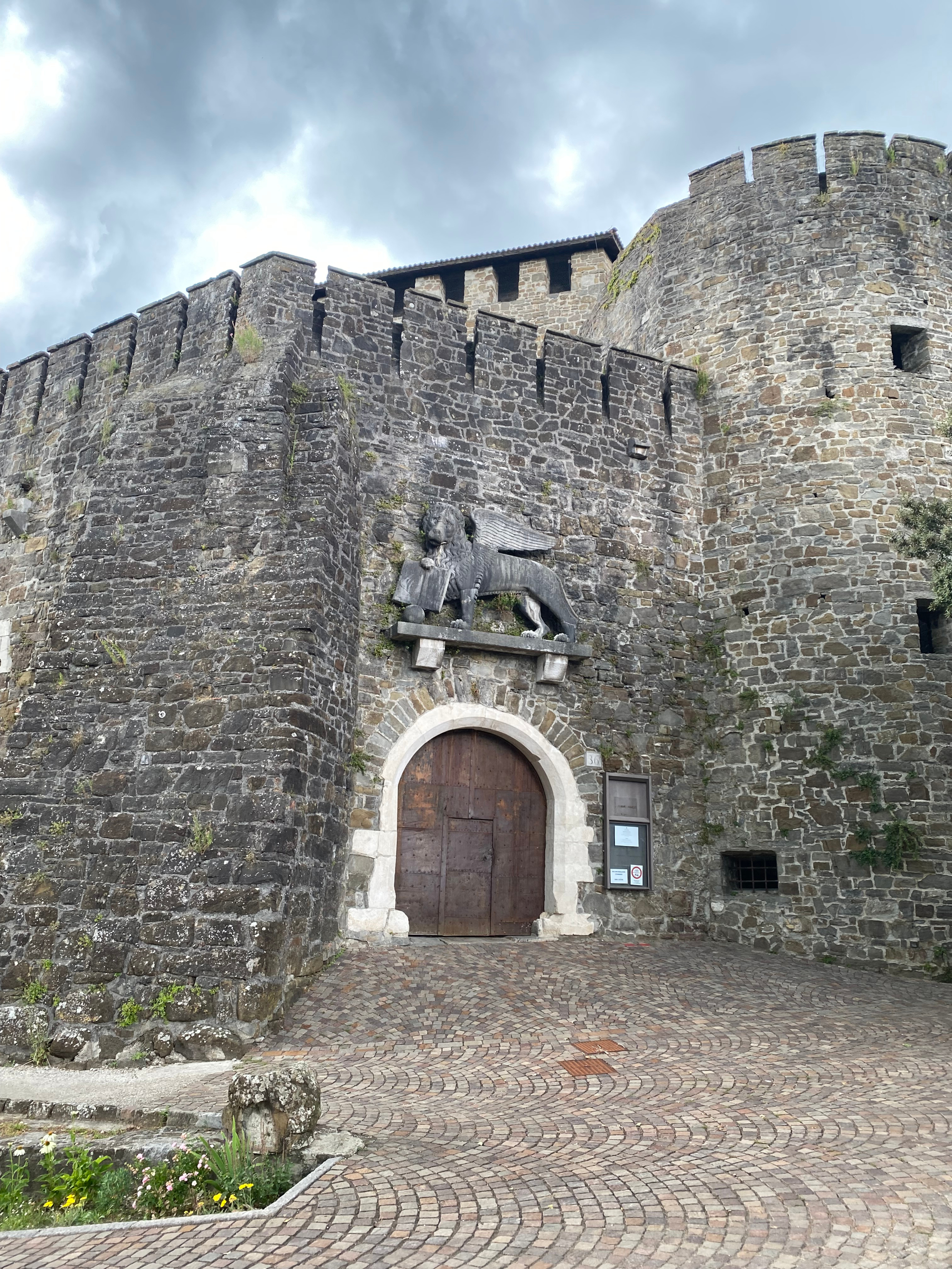Gorizia / Gorica / Görz
Gorizia is not a city like any other. The Austrian Railways knew this well, as they struggled to decide on the name to place on the main railway station: Gorizia, Gorica, or Görz? A centuries-old transit point between the Latin, Mediterranean world and the Slavic and Germanic world of Central Europe, Gorizia has been a place of both encounter and conflict. This is evident from the somber notes of the anti-militarist song *O Gorizia tu sei maledetta*, which laments the carnage of the Great War. Choosing a language for the railway station was so difficult because the city's different identities were deeply intertwined in a long-standing balance.
Over the centuries, the city’s population was largely composed of Friulians, who engaged in artisanal and commercial activities, Slovenian farmers in the outskirts and lower town, and Germans employed in public administration. When Gorizia officially became a city in the 14th century, it was the ‘capital’ of a county stretching from Southern Tyrol to Northern Istria. In 1500, the last Count of Gorizia, Leonardo, who had no heirs, bequeathed the county to Maximilian I of Habsburg. For centuries—until Emperor Franz Joseph I of Austria initiated a plan to Germanize or Slavicize Italian-populated areas of the empire (1866)—Habsburg Gorizia avoided drawing rigid boundaries between languages, customs, and influences.
At the dawn of the 20th century, the age of nationalism shattered this delicate balance. The city became a battleground and was destroyed by the Italian army. Gorizia then became the ‘gateway’ to an Italy that perceived itself as fragile and insecure. Along with its reconstruction came the forced Italianization of the Fascist era: beginning with place names, continuing with surnames (1927), and culminating in the ban on teaching Slovenian in public schools (1929). With the invasion of Yugoslavia in 1941, Fascist authorities interned a number of ‘allogeni’—as Slovenians were called—in concentration camps.
After World War II, during the Cold War years, the Iron Curtain fell like an axe on the city, which for decades embodied the stark opposition between two ideological and national blocs. Two blocks and two distinct cities: on one side, the historic center, which remained in Italian territory, with its serene *fin de siècle* atmosphere and medieval urban layout at the foot of the castle; on the other side—just a short distance away—Nova Gorica, a new city reflecting the aspirations of the Socialist Federal Republic of Yugoslavia to create a forward-looking, alternative society to its cross-border sibling.
For decades, Gorizia was a symbol of division and opposition. Today, however, Gorizia and Nova Gorica present themselves as a laboratory for a new European identity. Two cities, one shared goal: to become the first European Capital of Culture to transcend borders.
In contrast to the wounds of its history, Gorizia now appears as a charming provincial town that still retains signs of its past as a climatic resort. The promenades, elegant villas, and gardens of the "Austrian Riviera" surround the historic center, a reminder of the former County of Gorizia and Gradisca, with the onion-domed bell towers of Saint Ignatius Church and the castle hill.
Tucked away yet at the heart of key events in European history, Gorizia today stands as an example of coexistence in an era marked by the resurgence of borders and divisions.
